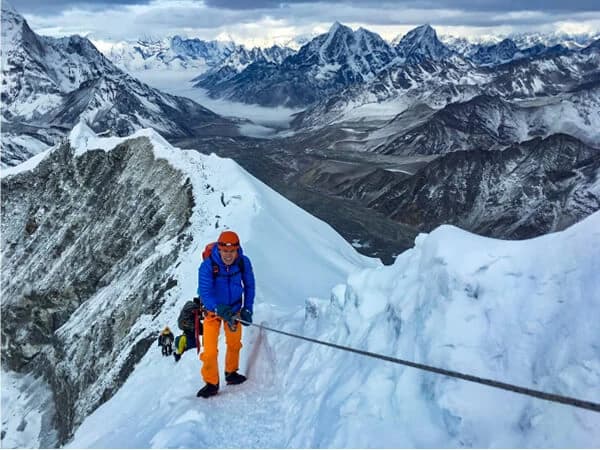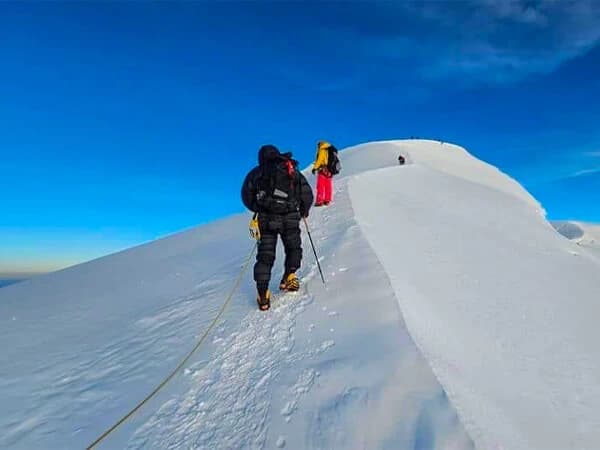Peak climbing in Nepal presents an exhilarating opportunity for adventurers to embark on awe-inspiring ascents to the summits of designated peaks nestled within the majestic Himalayas. Unlike the towering giants of Everest and Annapurna, these peaks stand at slightly lower altitudes, ranging from approximately 5,500 meters to 6,500 meters above sea level. This range provides a perfect introduction to the captivating world of high-altitude mountaineering, offering a thrilling blend of challenge, adrenaline, and breathtaking vistas. As climbers traverse glaciers, navigate challenging terrain, and conquer technical ascents, they are rewarded with panoramic views of snow-capped peaks, pristine valleys, and vast expanses of rugged wilderness. With careful preparation, physical conditioning, and a spirit of adventure, peak climbing in Nepal opens doors to unforgettable experiences and lifelong memories amidst the awe-inspiring grandeur of the Himalayan landscape.
Some popular peak climbing routes in Nepal include Island Peak (Imja Tse), Mera Peak, Lobuche Peak, Pisang Peak, and Yala Peak. Each peak presents its own set of challenges and rewards, from technical ascents to stunning panoramic views of the surrounding Himalayan landscape. Peak-climbing permits are necessary in Nepal, and the Nepal Mountaineering Association (NMA) or the Department of Tourism issues these permits. Additionally, climbers may need to obtain trekking permits for the regions they pass through.
Peak climbing in Nepal requires a good level of physical fitness as well as technical mountaineering skills, depending on the difficulty of the peak. Climbers should be prepared for high-altitude conditions, extreme weather, and challenging terrain. Prior mountaineering experience and training in glacier travel, ice climbing, and rope techniques are beneficial. The best seasons for peak climbing in Nepal are typically the pre-monsoon (March to May) and post-monsoon (October to November) periods when the weather is relatively stable and the skies are clear. Climbing during the monsoon season (June to September) is not recommended due to heavy rainfall and poor visibility.
Climbers are encouraged to practice Leave No Trace principles and adhere to ethical guidelines while climbing in Nepal. Respecting local customs, supporting local communities, and minimizing environmental impact are essential aspects of responsible peak climbing.
Peak climbing in Nepal offers a thrilling opportunity to test your mountaineering skills, push your limits, and immerse yourself in the awe-inspiring beauty of the Himalayas. Whether you're a seasoned climber seeking new challenges or a novice looking for an unforgettable adventure, Nepal's peaks beckon with their majestic summits and untamed wilderness.
.webp&w=3840&q=75&dpl=dpl_B22n3RDZYE3wLXxwUTJy6N9BzP8b)


